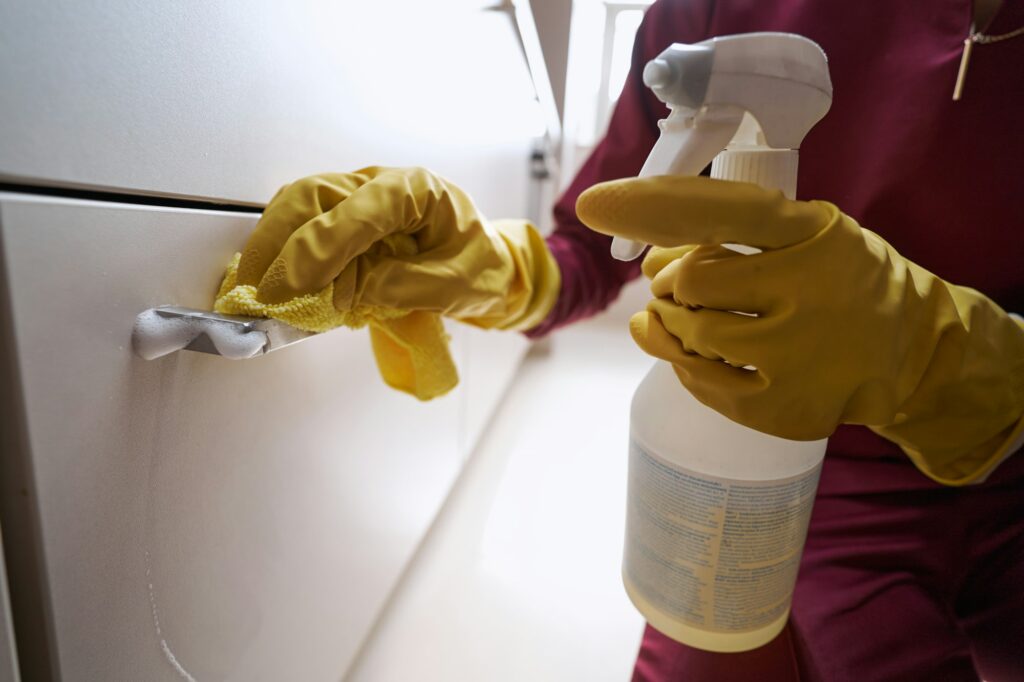Regular Cleaning: The First Line of Defense
Daily Dusting and Debris Removal
- Start with Soft Tools: Use a soft cloth or duster to gently remove surface dust and debris. Regular dusting prevents buildup that can scratch or dull the cabinet surfaces.
Deep Custom Cabinet Cleaning Methods
- Mild Soap Solution: For a deeper clean, dilute mild dish soap in water and gently wipe the cabinets using a soft cloth. Rinse with a damp cloth and dry thoroughly to prevent moisture damage.
Immediate Attention to Spills and Stains

Tackling Spills Swiftly
- Quick Wipe Downs: Spills and splatters should be wiped up immediately with a damp cloth to prevent staining or damage to the wood finish.
Removing Stubborn Stains
- Natural Cleaning Solutions: For persistent stains, create a paste of baking soda and water. Apply gently, rinse off, and follow with a soft, dry cloth to polish the area.
The Role of Polishing in Cabinet Care
Enhancing the Cabinet’s Shine
- Selecting the Right Polish: Opt for a high-quality furniture polish that’s appropriate for your cabinet’s finish. Test in an inconspicuous area first to ensure compatibility.
Application Techniques for Custom Cabinet Cleaning
- How to Apply Polish Effectively: Apply the polish sparingly with a soft cloth, working in the direction of the wood grain. Buff to a shine, avoiding over-application to prevent buildup.
Hardware Maintenance: Ensuring Functionality
Keeping Hardware Tight
- Regular Checks on Handles and Hinges: Inspect and tighten loose screws on handles and hinges periodically. This prevents wear and tear and ensures smooth operation.
Lubrication for Longevity
- The Importance of Lubrication: If hinges become squeaky, a small amount of lubricant can ensure continued smooth operation and prevent rust or corrosion.
Mitigating Moisture: Protecting Wood Integrity
Understanding Wood and Moisture
- Wood’s Natural Reaction to Moisture: Wood expands with humidity and contracts when it’s dry. Prolonged exposure to moisture can lead to warping or damage.
Practical Moisture Management
- Strategies for Reducing Kitchen Humidity: Use exhaust fans during and after cooking to minimize moisture. Consider a dehumidifier during humid months to maintain optimal humidity levels.



